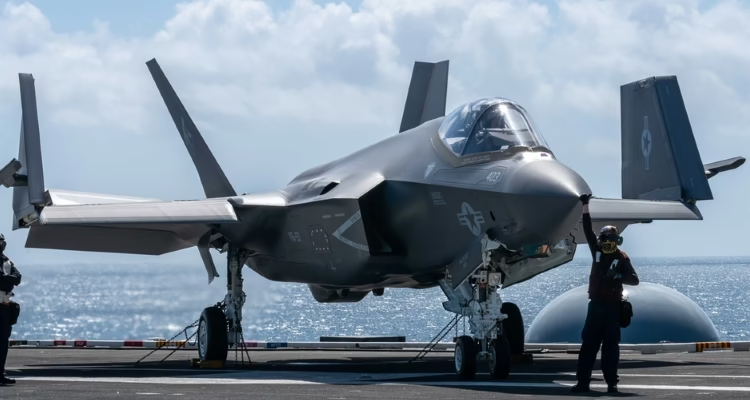
Thiruvananthapuram, India: A British F-35B Lightning II stealth fighter jet, hailed as the crown jewel of fifth-generation airpower, remains grounded on Indian soil for over ten days, following an emergency landing on June 14. Despite multiple repair attempts by British Royal Navy technicians from the HMS Prince of Wales Carrier Strike Group, the aircraft continues to suffer from unexplained technical failures — and may now have to be airlifted back to the UK.
According to reports, the jet was returning from joint naval exercises with the Indian Navy in the Indo-Pacific when it was forced to land in Thiruvananthapuram due to critically low fuel levels. Indian Air Force personnel quickly provided assistance, including emergency refuelling. However, as the aircraft prepared for departure, a new snag reportedly emerged — a hydraulic system failure that has since prevented takeoff.
Sources suggest that if ground repairs fail, the only viable option left could be transporting the high-tech aircraft back to the UK via a cargo plane.
Initially, British officials attributed the grounding to a fuel shortage. Later, the narrative shifted to a mechanical malfunction. However, an alternate and increasingly discussed theory among observers is raising eyebrows: the F-35B may have been digitally “locked” after being tracked by Indian air defence radars upon entering Indian airspace.
While no official statement has confirmed this, insiders claim that the aircraft was immediately detected, tracked, and “locked” by Indian radar systems in a way that could not be bypassed — a digital lock so complex that neither the American nor British engineers have been able to override it. Despite multiple troubleshooting attempts, the jet remains non-operational — with technicians reportedly “sweating it out with codes.”
The episode has become both an operational puzzle and a geopolitical curiosity. The F-35B, developed by Lockheed Martin, is globally regarded as a technological marvel with STOVL (short takeoff and vertical landing) capabilities, specifically tailored for aircraft carriers. For such a platform to be grounded for days in a partner nation, with no signs of resolution, is a rare and sensitive event.
The situation has sparked international attention and raised questions about the vulnerabilities of next-gen stealth platforms when operating in foreign environments. For now, the much-vaunted symbol of American air dominance stands idle on Indian tarmac — like a supercar with the keys missing.



